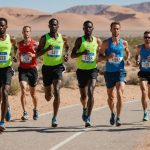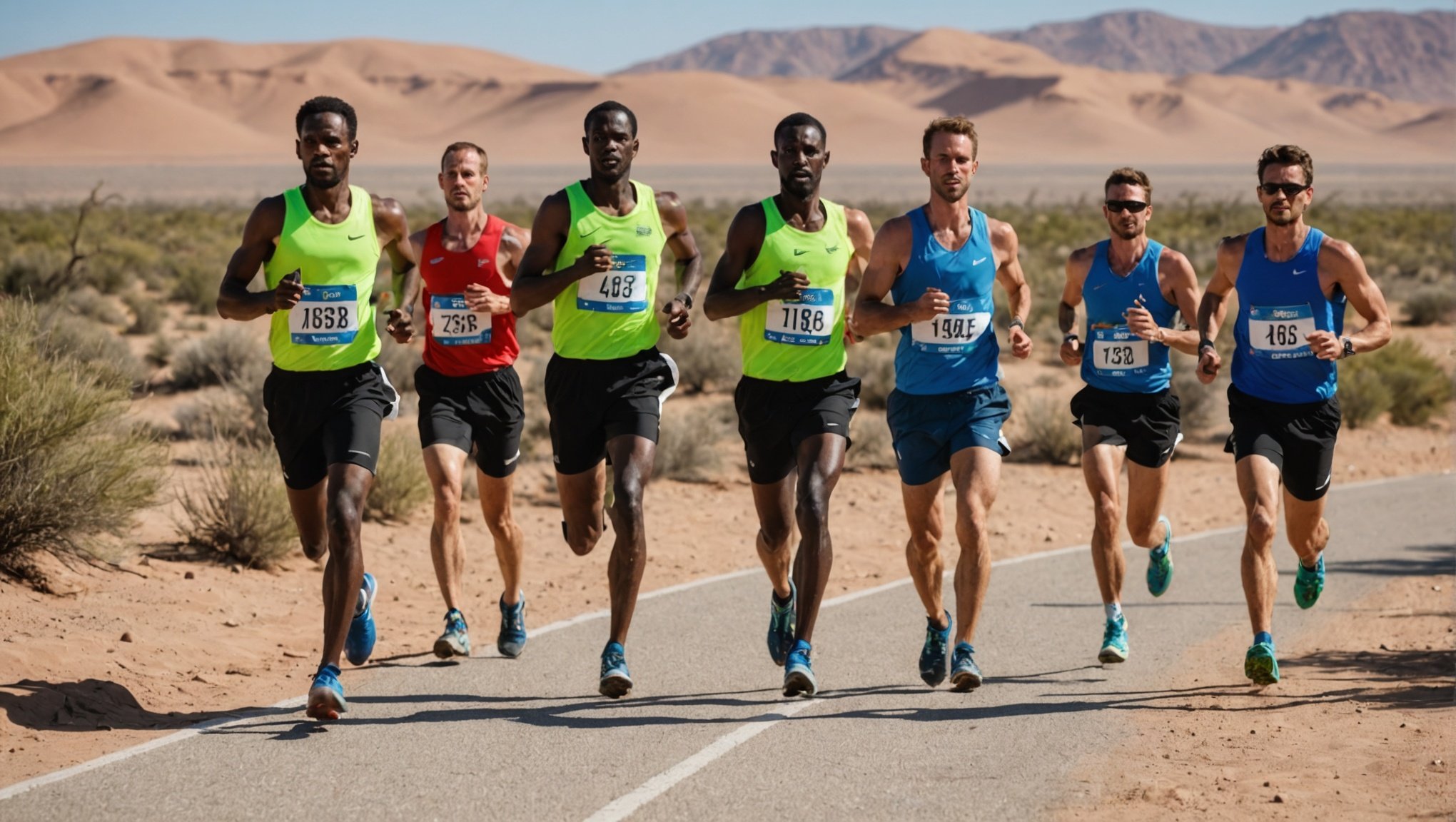Understanding Hydration’s Role in Marathon Performance
Hydration plays a critical role in influencing marathon performance. During endurance training, adequate hydration is foundational for maintaining optimal physiological function. A hydrated body can regulate temperature, transport nutrients, and eliminate waste more effectively, directly impacting marathon performance.
Athletes should monitor key hydration metrics, particularly body weight before and after training sessions. This provides insight into water lost through sweating, guiding replenishment needs. The colour of urine can also be a basic indicator of hydration status—paler shades often signal adequate hydration.
Additional reading : Boosting Team Dynamics in Corporations: Leveraging Sports Psychology Strategies for Success
Dehydration, even in small degrees, can lead to decreased blood volume, impairing muscle performance and increasing fatigue. This is crucial during a marathon when the body relies on steady and efficient circulatory function to maintain endurance levels.
Post-marathon, hydration aids in recovery by facilitating muscle repair and reducing inflammation. Consuming fluids with electrolytes is advisable to balance electrolyte levels and speed up recovery. Here, the relationship between hydration and recovery is evident as proper fluid intake accelerates the healing process, allowing athletes to resume training sooner and with greater efficiency.
Incorporating these metrics and understanding into daily training improves overall marathon performance, ensuring runners remain at peak condition on the big day.
Challenges of Hydration in Arid Environments
In arid conditions, the combination of high temperatures and low humidity significantly impacts fluid loss. These environments accelerate evaporation from the skin, leading to increased sweat rates. As temperatures rise, the body’s cooling mechanism becomes less efficient, requiring more hydration to maintain core temperature. Consequently, the risk of dehydration escalates, posing severe threats to individuals, particularly endurance athletes.
Dehydration in these settings can lead to impaired performance, reduced cognitive function, and an increased risk of heat-related illnesses. For endurance athletes, maintaining optimal performance under arid conditions necessitates careful consideration of hydration strategies. Fluid requirements vary depending on the environment’s specific temperature and humidity levels, making generalized strategies insufficient.
To combat these hydration challenges, athletes should tailor their intake to match the demands of their activity and the unique conditions they face. This includes adjusting the frequency and volume of fluid consumption before, during, and after physical exertion. Additionally, incorporating electrolytes can be beneficial to replenish lost minerals and support fluid balance.
Ultimately, recognizing the impact of arid environments on hydration is crucial. By developing informed, flexible strategies tailored to these unique challenges, individuals can maintain performance and health despite the demanding conditions.
Precision Hydration Strategies
Creating a hydration plan is essential for meeting individual needs and maintaining peak performance. Understanding personal sweat rates is the first piece of the puzzle. These rates vary widely from person to person, impacting fluid needs during physical activities. A tailored hydration plan can ensure optimal performance and prevent dehydration.
Customizing Hydration Plans
Precision Hydration involves crafting specific strategies based on individual requirements. These plans should factor in personal sweat rates and environmental conditions. It’s vital to adjust fluid intake based on weather, activity intensity, and personal perspiration to stay hydrated effectively.
Importance of Electrolyte Balance
Electrolyte balance is crucial when developing hydration strategies. Individuals lose different amounts of key electrolytes like sodium and potassium during exertion. Tailoring electrolyte intake can prevent imbalances that could lead to cramps or energy slumps. Incorporating drinks with balanced electrolytes supports sustained performance.
Monitoring Hydration Status
Tracking hydration status is a proactive approach to staying hydrated. Tools like wearable tech and apps can offer real-time data on fluid loss and intake. Understanding this data helps individuals adapt their strategies and optimize hydration before and during races. By integrating these elements, athletes can personalize their hydration plans, ensuring maximal efficiency and performance.
Practical Tips for Athletes in Arid Climates
Navigating hydration in arid climates is crucial for athletic performance. Practical hydration tips begin with the choice of fluids. It’s best to combine water with electrolyte drinks that replenish lost minerals such as sodium and potassium. For those seeking enhancement, consider supplements like BCAAs which aid muscle recovery and support endurance.
Athlete strategies for optimal hydration include timing and frequency. During training and races, adopt a consistent pattern: sip regularly rather than gulping large quantities. Start hydrating approximately 2 hours before activity; aim for 500-600ml of fluid. Throughout exercise, target intake every 15-20 minutes, consuming about 150-350ml each time.
Marathon preparation is incomplete without emphasizing pre-race hydration. Begin several days in advance to ensure optimal body water levels. On race day, reminders of flexibility are key—adapt based on environmental shifts or physical needs.
Post-race recovery hinges on replenishing fluids and nutrients lost through sweat. Embrace a recovery drink or snack rich in carbohydrates and protein to refuel energy stores and promote muscle repair.
Prioritizing these strategies not only elevates performance but safeguards athletes’ well-being in challenging arid environments.
Case Studies and Anecdotes
Engaging in successful hydration strategies can dramatically enhance athletic performance. Consider the case of a marathon runner, who improved her times significantly after adopting a tailored strategy that factored in her personal sweat rate and the climate of her race locations. By understanding the precise fluid balance her body required, she not only avoided dehydration but also forestalled the sluggishness that comes from overhydration.
Real-life examples abound from top athletes, such as those competing in marathons held in arid regions. These athletes painstakingly calculate their hydration needs, ensuring they are optimally primed for peak performance. An exemplary lesson came from the 2017 Sahara Marathon. Runners here mastered hydration by preemptively adjusting their intake based on forecasts and observed sweat metrics, illustrating a sophisticated application of theory to the challenging desert environment.
Expert insights demonstrate the nuance required in effective hydration practices. Elite athletes advocate for personalised plans, acknowledging factors like humidity, sweat rate, and intensity levels. They stress that mimicking generic plans is a mistake; instead, they recommend observing one’s unique physiological responses. By focusing on tailor-made strategies, athletes can ensure that hydration becomes a potent tool in their arsenal for performance improvement.
















